|

| Of all animal orders, Coleoptera contains the most species. From minute specks almost invisible to the human eye to hefty insects that can cover your palm, beetles are a substantial segment of just about every terrestrial ecosystem. In spite of their abundance and diversity, beetles often go unnoticed by many people and, undoubtedly, part of their success is due to remaining so discreet. With tough outer body protection and the ability to fly, beetles are equipped to disperse and utilize habitats from desert to aquatic. We'll look at the variety, characteristics, life cycle, behaviors and relationships of these fascinating and beautiful creatures. | 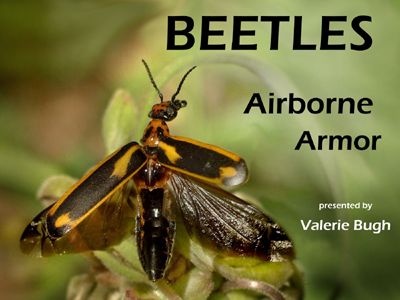 |
 |
| Insects are not like humans. In fact, they are so different that many of their body bits and functions are a mystery to the casual naturalist. Extra eyes, ears on legs and things that stick out the rear end are all included in the arthropod assemblage. While introducing some of the specialized terminology used in entomology, this program explores the growth, anatomy, diversity and life histories of insects and other arthropods through colorful close-up photography. | 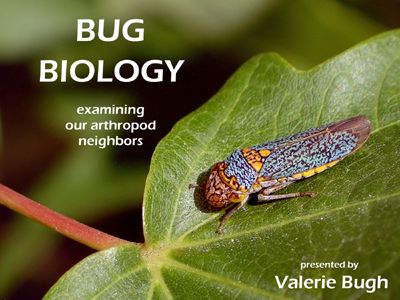 |
 |
| Of about 2000 species of lepidoptera found in the Hill Country, only 150 are butterflies. Moths are far more numerous and diverse than butterflies, including more varied lifestyles, far greater size range, and some rather surprising survival strategies. This program will cover both caterpillars and adults, identifying the major families as well as some oddities, and a look at the beauty of these often overlooked insects. | 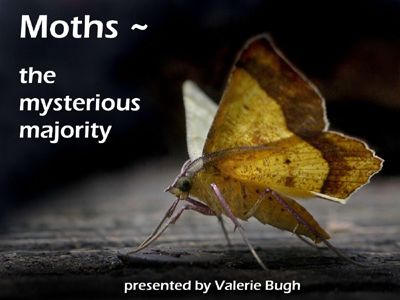 |
 |
| Enjoy a photographic tour of the smaller members of our local fauna, with tips on distinguishing other arthropods from insects, beetles from true bugs, flies from bees, and recognizing the major insect groups. The presentation will also include information on general life history, behaviors, and associations. | 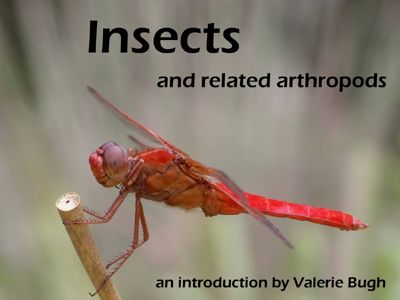 |
 |
| As the status of insect pollinators has become a more critical concern, amateur naturalists are increasingly assisting in research where they contribute photographs, sightings, and other data. A crucial skill is the ability to recognize the different kinds of bees, from the ubiquitous Western Honey Bee to our myriad native species. This program presents a survey of our local fauna, while also providing visual hints that help when trying to separate look-alikes. | 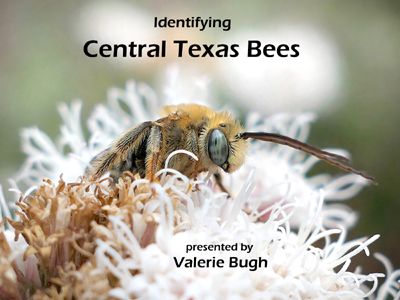 |
 |
| Gardens are more than collections of plants; they are dynamic ecosystems. Through a program of weekly surveys initiated in early 2010, a group of nature-loving volunteers has been consistently recording data on the animals found within the Lady Bird Johnson Wildflower Center in Austin, TX. From inception to the vast number of identifications and observations accumulated, this program tells the story of the Fauna Project. Photography is an important tool in this study, so there is no dearth of colorful images to highlight the insects, spiders, birds, reptiles, etc. and their behaviors. Take a close look at the biome, glimpse some of the diverse residents in an organically cultivated native plant habitat and see why variety is the spice of life. | 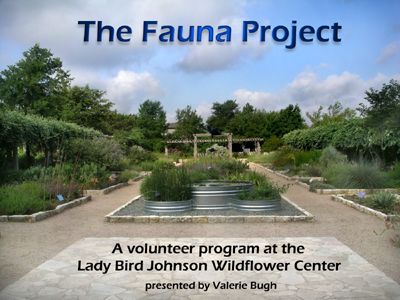 |
 |
| The movement of pollen from stamen to stigma is a major issue for plants, and they cannot easily do it themselves. While bees are the first resource that comes to mind when pollination is mentioned, no ecosystem is simple; complexity demands multiple solutions to the issue. We will look at the various animals that interact with plants in this process, and discuss the expenditures, risks and compensations. | 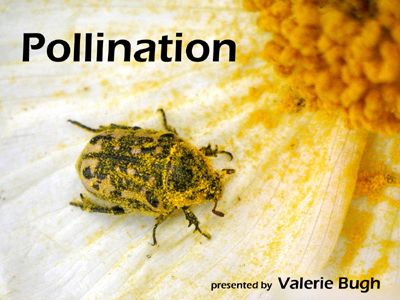 |
 |
| One of the most effective ways to learn more about the world around us is to keep a journal. By recording what we see, our observational skills improve, we gather more information, remember it better, and understand our place in the environment a little bit more. The traditional tools of the past (watching, listening, taking notes, drawing, telling stories) are still relevant today, but our kit has been expanded by computers, email, the internet and digital photography.
From the practice of watching nature to the sharing of information, this presentation will explore various aspects of studying our surroundings, with special emphasis on using a digital camera to record the minute details of what we discover. |  |
 |
| There is a lot more to butterflies than just pretty wings. These insects are a dynamic component of the ecosystem and offer people a manageable glimpse into the complex world of arthropods. This program covers the major groups of butterflies, their predators, behaviors, challenges, life cycle, and survival strategies. | 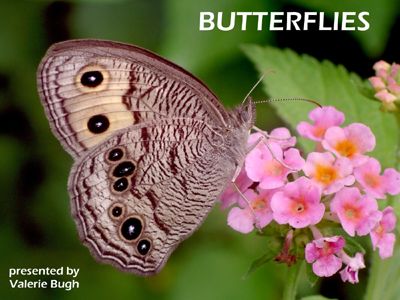 |
 |
| An overview of spiders and related arthropods, their place in the ecosystem, and their relationships with insects. Often considered to be among the creepiest of creatures, spiders become much less mysterious (read "scary") when we know more about them. This program will delve into their intriguing world, examining predator/prey relationships, survival strategies, life histories and identification. | 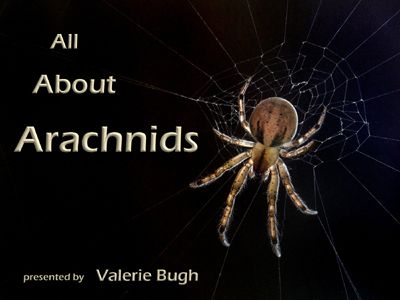 |
 |
| This program takes a look at 8 small orders of relatively large long-winged insects. Though not closely related to the palaeopterous dragonflies and mayflies (ancient lineages), lacewings, snakeflies, fishflies, stoneflies, caddisflies and scorpionflies share a few features with them. We'll discuss the similarities and, most notably, the differences between these assorted groups. Many are aquatic, some are predators, and they exhibit a variety of life histories. From the first flying animals to highly specialized modern species, this is an exploration of insect flight and evolution, as well as a survey of some conspicuous creatures that don't fall into major taxonomic categories. |  |
 |
| Although "bug" is used to describe almost anything that is small, creepy and bothers us, there is actually a large group of insects for whom that name is real. The true bugs are one of the most often misidentified and misunderstood of any arthropod group. This program will explore the diversity of these creatures, which include important predators, essential food chain components, and notorious pests. | 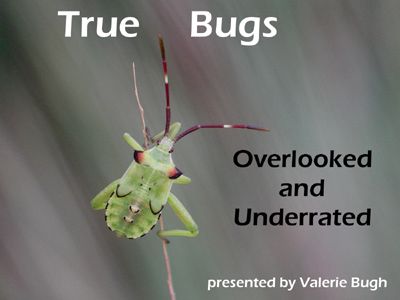 |
 |
| A bit of beginning botany to serve as a prelude to more detailed exploration of topics such as identification, taxonomy, morphology and ecology, this program covers the evolution of the major plant groups, explanations of some fundamental terms, brief descriptions of life cycles and associations of habitat with survival strategies. We conclude with a discussion of informal classification systems that reflect the relationships between humans and the vegetation around us. |  |
 |
| Vectors of disease, pests of livestock and humans, "worms" that damage fruits and vegetables: these are all typical associations that we have for flies. However, this group of insects also includes predators, pollinators, waste recyclers, and a key component of all terrestrial and freshwater habitats. Through vibrant photographic images, we will explore the diversity, physiology, life cycle, and survival strategies of this important order of insects. | 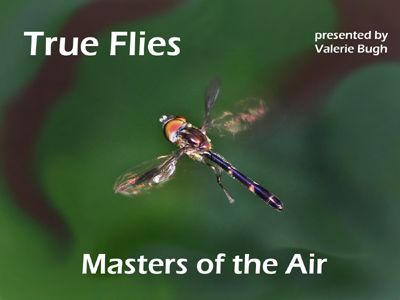 |
 |
| There is more going on in your garden than you might ever imagine. While it is well known that flowers lure such showy visitors as hummingbirds and butterflies, there is a lot more that occurs within this unique habitat. This talk will cover the wide range of arthropods that utilize blossoms as a place to find food and mates, as well as the relationships and interactions that occur between species. | 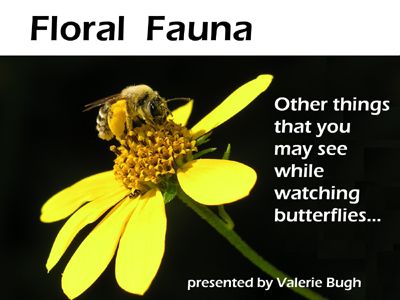 |
 |
| While a familiar goal is to see "the big picture," it often becomes apparent that any such view is the sum of myriad little bits. Discovering and recording those minute gems is an absorbing pastime, especially when each subject has its own story to tell and the layers of understanding seem to increase with exploration. In the great outdoors, mobility, agility, awareness and perseverance really matter, and this program covers the joys, challenges and frustrations of photographing diminutive creatures outside a studio situation. From finding to focus to finish, we'll discuss creative ways to optimize the quality of images taken during zoo visits, garden strolls and backyard safaris. | 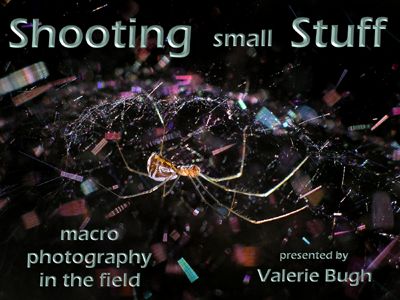 |
 |
| Any attentive gardener has invariably run across odd "things" on their plants that aren't easily identified and don't have an obvious explanation. Many of these phenomena are the result of organisms from kingdoms other than plants, often animals and fungi. The relationships between these disparate groups is frequently complex, sometimes surprising, and always intriguing. To better understand the ecology of any thriving habitat, we'll look at growths, attachments and damage on plants with a focus on what caused them and why. | 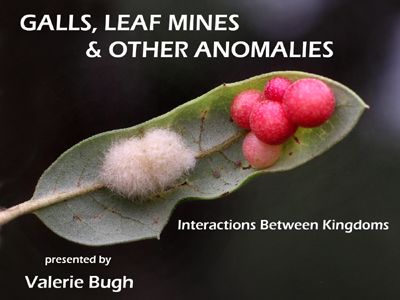 |
 |
| Best known for their song and dance (think "Jiminy Cricket"), the real-life counterparts of the cartoon are actually fascinating creatures. The katydids and crickets are true singing insects and, along with the related grasshoppers, are distinguished by an ability to jump. Sharing a common ancestor with walkingsticks, mantises, earwigs, cockroaches and termites, the orthopterans display a wide variety of dietary adaptations, courting and territorial displays, camouflage and coloration, and, in some cases, parental dedication to their young. This program will explore the many facets of this group of insects through photos, and will cover basic identification, emphasizing our central Texas fauna. | 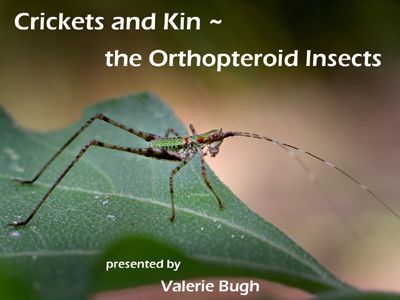 |
 |
| About 84% of all animal species belong to the phylum Arthropoda. Trying to make sense of the enormous diversity inherent in such a large portion of life on Earth requires understanding the basics of how they are categorized. Whether you would like a review of the major arthropod groups or a primer for beginning entomology, this talk will help demystify the way we handle vast amounts of information through applying names. | 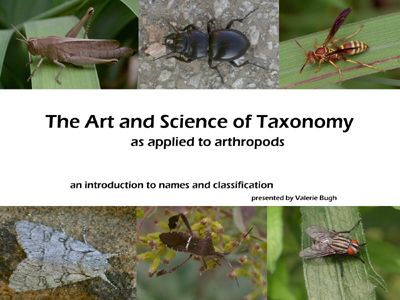 |
 |
| When it comes to diverse lifestyles in the animal kingdom, wasps provide some of the most intriguing examples. From minute parasitoids that complete their entire life cycle within the egg of another insect to large predators that can tackle a tarantula, wasps are both captivating and disconcerting. They are important biological controls of many pest insects, the social species are among the most successful animals on Earth, and the fact that some can sting makes them intimidating. We will explore the biology and ecology of this fascinating group through colorful photographs of the beasts and their behaviors. | 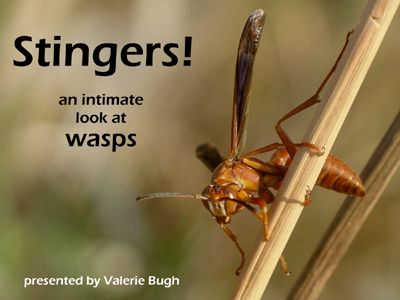 |

|

 Insects are tiny, so one of the requirements for people to appreciate their diversity, characteristics and beauty is magnification. Using a loupe or microscope is fine for actual specimens, but the elegance of digital photography makes it the medium of choice for learning about the vast majority of creatures that share this world with us. Photos not only let us see all the details that are too small for our human eyes to grasp, but they can record true colors, fragile structures, habitat associations and behaviors. While most of my programs feature habitats and species found in central Texas, some are more general and I have used them in other states.
Insects are tiny, so one of the requirements for people to appreciate their diversity, characteristics and beauty is magnification. Using a loupe or microscope is fine for actual specimens, but the elegance of digital photography makes it the medium of choice for learning about the vast majority of creatures that share this world with us. Photos not only let us see all the details that are too small for our human eyes to grasp, but they can record true colors, fragile structures, habitat associations and behaviors. While most of my programs feature habitats and species found in central Texas, some are more general and I have used them in other states.



















